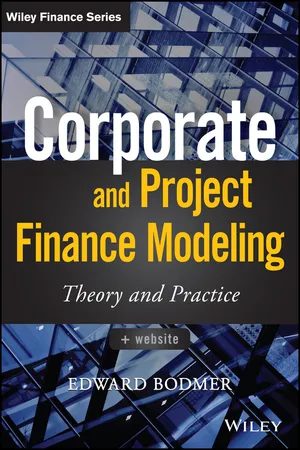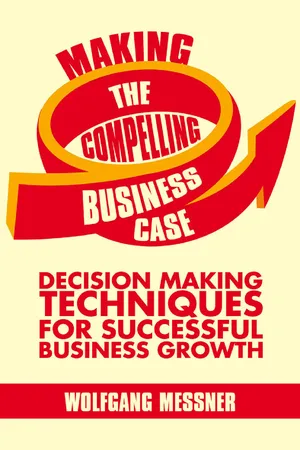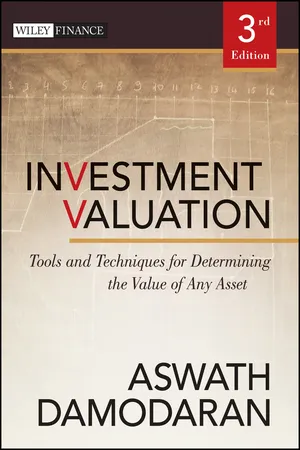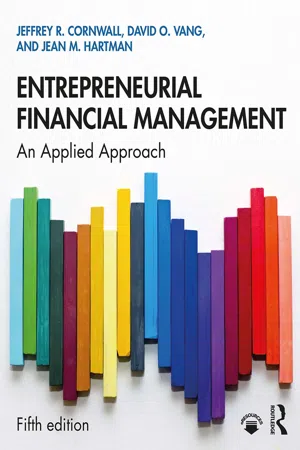Business
Terminal Value
Terminal value refers to the present value of all future cash flows of a business beyond a certain point in the future. It is used in business valuation to estimate the total value of a company at the end of a specific period. Terminal value is often calculated using the perpetuity growth model or exit multiple method.
Written by Perlego with AI-assistance
Related key terms
Related key terms
1 of 4
Related key terms
1 of 3
6 Key excerpts on "Terminal Value"
- eBook - ePub
Company valuation under IFRS - 3rd edition
Interpreting and forecasting accounts using International Financial Reporting Standards
- Nick Antill, Kenneth Lee(Authors)
- 2020(Publication Date)
- Harriman House(Publisher)
lue drivers.We shall keep the model simple and just run the Terminus off two assumptions: earnings growth and return on incremental capital. But it is important to note how flexible this approach can be made to be.If we add together the net present value of the free cash flows in exhibit 5.2, and the value that derives from applying the Gordon Growth model to the free cash flow in the Terminus, then we can add them together to derive a value for the operating assets of the company.Before we move on there is one frequent error that must be avoided a t all costs.Remember that the Gordon Growth model applied to the free cash flow in the Terminus will derive a value as at the end of the forecast period (a future value of the Terminal Value). For our purposes we want a present value of the Terminal Value, so the formula for the Terminal Value that we want in our valuation is as follows:This gives us the Terminal Value at the end of year zero (the last financial year) based on free cash flow in the first year after our explicit forecast period (the Terminus year), capitalised as a growth perpetuity (by the Gordon Growth model) and discounted back for the length of the forecast period. In the case of our model the discounting of the Terminal Value will be over five years, even though the Terminal Value relates to cash flow in year six. Do not forget that the Gordon Growth model capitalises a growing perpetuity which starts with a payment in a year’s time, so a stream starting at end year six is valued at end year five, and then brought back for five years to end year zero. - eBook - ePub
Corporate and Project Finance Modeling
Theory and Practice
- Edward Bodmer(Author)
- 2014(Publication Date)
- Wiley(Publisher)
Chapter 25 . If the company is not sold and cash flows are always realized in the middle of the year, the value of the company should be the same as if you separately compute the present value of explicit period cash flows and the present value of terminal cash flow. This long-term theoretical exercise demonstrates that all of the business of midyear discounting ends up in a simple formula that can be implemented as follows:- Compute the value of explicit cash flows and the value of the Terminal Value as if you were using the end-of-year cash flows, meaning that you can use the regular old NPV function.
- Multiply the final result by (1 + WACC)^.5 to adjust for the half-year assumption.
To demonstrate that this formula works, you can create a proof in the same manner for proving how items associated with the bridge between enterprise value and equity value should be treated. The value of cash flows in the long-term model establishes the theoretically correct value of the company. This is the same value that should be obtained from the sum of the Terminal Value and the value of the explicit cash flow. The value of the terminal cash flow as measured by the Terminal Value is in a sense just a shortcut, as the buyer at the terminal date should pay the theoretical long-term value. When you assume that the explicit cash flows occur at the middle of the period and the Terminal Value occurs at the end of the period, but the buyer makes a valuation from receipt of cash flow in the middle of the period, the valuation is the same as the simple formula shown earlier. Figure 28.4 - eBook - ePub
Making the Compelling Business Case
Decision-Making Techniques for Successful Business Growth
- W. Messner(Author)
- 2013(Publication Date)
- Palgrave Macmillan(Publisher)
Calculating the Terminal Value is not without complexities and the correct method depends on what is going to happen with the investment after the period considered for the business case. Will it be a dead-end and will it be wound up? Or is it an ongoing project even after the business case’s investment period? Another factor is how conservative the estimation should be and whether the NPV of the business case depends a lot on what will be done with the asset after the investment period. Terminal Value for dead-end investments (liquidation and book value method) The most conservative method for estimating the Terminal Value of investments coming to a definite end is the liquidation value method. It assumes that the company has no more use for any of the assets and therefore the assets need to be liquidated by offering and selling them on the market. As estimating the future sales price of an asset on the market is prone to uncertainty, the Terminal Value needs to be calculated conservatively. A general approximation formula for the liquidation value method is: 100 per cent of cash, Plus 90 per cent of accounts receivable, Plus 70 per cent of non-perishable stocks, minus costs for disposing perishable stocks, Plus 50 per cent net value of property, plant, and other equipment, Minus current liabilities, and Minus present value of non-cancelable leases and other contracts. Another, slightly less conservative, method is the book value method. It seeks to estimate the balance sheet value of all tangible assets at the end of the investment period. All intangible assets (brand equity, know-how, etc.) are removed from the investment’s book value because they are difficult to estimate subjectively. Hence the book value method is often applied for investments in the area of manufacturing, plants, and infrastructure equipment, which are winding down either abruptly at the end of the investment period or within the following one or two years - eBook - ePub
Investment Valuation
Tools and Techniques for Determining the Value of Any Asset
- Aswath Damodaran(Author)
- 2012(Publication Date)
- Wiley(Publisher)
CHAPTER 12 Closure in Valuation: Estimating Terminal ValueIn the previous chapter, we examined the determinants of expected growth. Firms that reinvest substantial portions of their earnings and earn high returns on these investments should be able to grow at high rates. But for how long? And what happens after that? This chapter looks at two ways of bringing closure to a valuation: a going concern approach, where we assume that the firm continues to deliver cash flows in perpetuity and a liquidation approach, where we assume that the business is shut down and the assets are sold at some point in time.Consider the going concern approach first. As a firm grows, it becomes more difficult for it to maintain high growth and it eventually will grow at a rate less than or equal to the growth rate of the economy in which it operates. This growth rate, labeled stable growth, can be sustained in perpetuity, allowing us to estimate the value of all cash flows beyond that point as a Terminal Value for a going concern. The key question that we confront is the estimation of when and how this transition to stable growth will occur for the firm that we are valuing. Will the growth rate drop abruptly at a point in time to a stable growth rate or will it occur more gradually over time? To answer these questions, we will look at a firm's size (relative to the market that it serves), its current growth rate, and its competitive advantages.We also consider an alternate route, which is that firms do not last forever and that they will be liquidated at some point in the future. We will consider how best to estimate liquidation value and when it makes more sense to use this approach rather than the going concern approach. - eBook - ePub
Entrepreneurial Financial Management
An Applied Approach
- Jeffrey R. Cornwall, David O. Vang, Jean M. Hartman(Authors)
- 2019(Publication Date)
- Routledge(Publisher)
The moral to entrepreneurs is that a direct purchaser of their business will not be shy about demanding a rate of return in the range of 20–70 percent (about two to three times the rate on the stock market) on the equity that has been invested. On the other hand, if the purchaser is a large corporation with publicly traded stock or if stock is sold directly into a well-established market (i.e., an IPO), then investors might not demand such a high liquidity or risk premium, which would result in a higher value for the business. For instance, if investors demanded only a 20 percent rate of return, then Widgets Inc. would be worthNotice the inverse relationship between required rates of return and value. When investors demanded a lower rate of return, the value increased by $35,000 (from $100,000 to $135,000).= $ 135 , 000$ 27 , 0000.20This simple example demonstrates the forward-looking aspect of valuation. However, the use of a single number to represent average future income may be too simplistic to accurately capture the specific circumstances of the firm. We can now add more sophistication.Instead of using a single number to represent future earnings, it might be better to estimate the annual cash flow for a number of years (usually five or more) into the future. These estimated cash flows are then discounted at the appropriate rate to determine their present value (today’s cash equivalent). In addition, a terminal or ending value of the investment is estimated at the end of this forecasted time period. This Terminal Value also is discounted back to today’s cash equivalent, just like all the other cash flows. The Terminal Value represents the value of all cash flows expected to continue beyond the end of the analysis period. The sum of these discounted cash flows represents the cash value of Widgets Inc. as of today. Financial calculators, spreadsheets, or regular calculators can rapidly perform such calculations. The following example will demonstrate how.Suppose a more thorough valuation of the Widgets Inc. firm is desired. It is discovered that 5 percent growth in sales per year is a reasonable expectation, but the future beyond five years is totally indeterminate. In addition, Widgets Inc. has a machine that will wear out in two years and will cost $20,500 to replace. Given these assumptions, the next five years’ worth of cash flows (CFs) can be estimated as follows: - (Author)
- 2019(Publication Date)
- Wiley(Publisher)
A second method for estimating the Terminal Value involves applying a multiple at which the analyst expects the average company to sell at the end of the first stage. The analyst might use a free cash flow or other multiple that reflects the expected risk, growth, and economic conditions in the terminal year. Market multiples are rules of thumb applied by analysts, investment bankers, and venture capitalists to produce rough estimates of a company’s value. Multiples tend to vary by industry. They can be based on anything applicable to the industry and correlated with market prices. Some service industries tend to be priced as multiples of EBITDA (earnings before interest, taxes, depreciation, and amortization). In contrast, retail stores in some industries might be priced based on multiples applied to floor space. In these cases, the respective multiples can be used directly to produce a Terminal Value, or they can be incorporated into a pro forma analysis to convert the multiple into a consistent value for free cash flow.If the company in Exhibit 3 is in an industry where the typical company sells for about 20 times its free cash flow, then the company’s Terminal Value estimate would be:Terminal Value2011 = 20 × $1,799 = $35,980 = $36.0 millionHaving established an estimate for the Terminal Value, the analyst must discount it back from the end of the estimate horizon to present. The discount rate used is the same WACC estimate that was previously applied to discount the free cash flows. If we decide that the Terminal Value found using the constant growth method is more accurate than a market multiple, we would discount that value back five years (2011 back to the present):Adding the present value of the free cash flows ($5.802 million) to the present value of the Terminal Value ($35.670 million), we can estimate the value of the company to be $41.471 million.20
Index pages curate the most relevant extracts from our library of academic textbooks. They’ve been created using an in-house natural language model (NLM), each adding context and meaning to key research topics.
Explore more topic indexes
Explore more topic indexes
1 of 6
Explore more topic indexes
1 of 4





